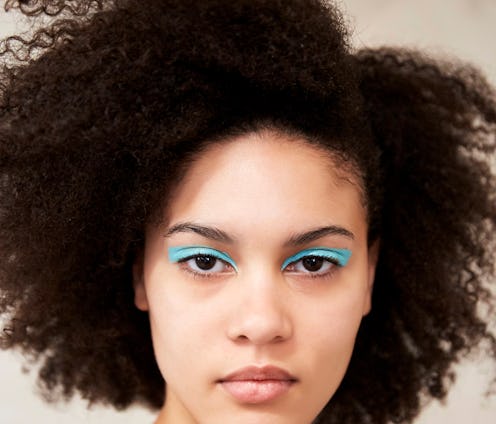(Beauty)
Platelet Rich Plasma Therapy Sounds Scary, But Gives You The Best Hair Ever

While flipping through the latest issue of New Beauty, as one does, I noticed what can only be described as The Next Big Beauty Thing. The magazine interviewed a slew of dermatologists and plastic surgeons about emerging trends in the aesthetic industry; and not one, not two, but three different medical professionals identified platelet rich plasma for hair growth (also known as PRP) as the innovation to watch. I’d heard of PRP therapy before, but mostly in terms of skincare: PRP is what’s colloquially (and perhaps controversially) known as “the vampire facial,” popularized by celebrities like Kim Kardashian and model Bar Refaeli. But apparently, it’s the secret to thick, healthy hair, too.
Whether applied to the skin or the scalp, the basic tenets of PRP are the same. A solution containing your own blood is injected into the treatment area in order to “stimulate your cells to regenerate,” Dr. Howard Sobel, a New York City dermatologist and the founder of Sobel Skin, tells The Zoe Report. Of course, the actual technique is considerably more nuanced than that.
“PRP describes an isolated component of whole blood that is rich in special molecules called growth factors,” Dr. Dominic Burg, a biologist and trichologist who works with évolis Profesional, tells TZR. He notes that there are a few different methods for collecting PRP from blood, but generally, blood is first taken from a vein and then “spun at high speeds in a centrifuge to remove the red blood cells,” he says. “The plasma will be removed from the blood cells and then spun in a centrifuge again to isolate the platelets.” Sometimes, the platelets and plasma are treated a third time for activation.
“During treatment, this solution is injected into the scalp, releasing platelets into the affected areas,” Dr. Sobel says. As the PRP stimulates cell regeneration and repair, it’s also thought to facilitate hair growth. “The growth factors in PRP can help kick start sluggish or dysfunctional follicles to grow faster and produce thicker hairs,” Dr. Burg explains. A handful of studies have been done on the effects of PRP for hair growth, and the results are promising. “However, the evidence is still not strong enough to say definitively that PRP alone, without other treatments concurrently, is an effective treatment for hair loss,” Dr. Burg says. As such, PRP isn’t necessarily recommended to treat hair loss, but rather, hair thinning.
“It’s important to note that PRP will not regrow a full head of hair, but it does help men and women with mild to moderate thinning hair,” Dr. Sobel says. “It has been shown to delay the loss of hair and restore hair growth density.” He maintains the ideal candidates for PRP are men or women who’ve noticed a little thinning and are looking for a relatively safe way to reverse it.
“Relatively" is they key word here. PRP is considered a minimally invasive treatment, but because the injection needle does break the skin, there’s always a risk of infection. And although Dr. Sobel says the treatment is low-risk since it involves your own blood, it’s worth mentioning that PRP facials have resulted in patients being exposed to HIV before, as reported by Allure. “You have to find a board-certified dermatologist or plastic surgeon,” Dr. Sobel stresses. “Do not go to a random spa for this procedure or find a deal on Groupon. With a board-certified dermatologist, it is a safe procedure with virtually no downtime.”
The major downsides to PRP treatment are that results aren’t immediate, it requires maintenance, and it’s pretty pricey. “Keep in mind that hair grows slowly, so results from PRP are seen after about 16 weeks,” Dr. Burg says. “The number of treatments can vary on a patient by patient basis, from just a single treatment to a series of up to six or more injections.” Individual injections are priced around $400, and the typical cost for a full round of PRP treatment can be anywhere from $1,500 to $3,500.
If you’re not ready to go all in, Dr. Sobel says there are other ways you can improve your scalp health at home to stimulate growth and density. “That means removing excess oil, dead skin cells, and dandruff to prevent clogged hair follicles, so [products] deliver nutrients right to the hair follicles,” he advises. “At-home derma rollers, like the FOLIGAIN Hair & Scalp Roller, help topical solutions better penetrate the scalp, too.”